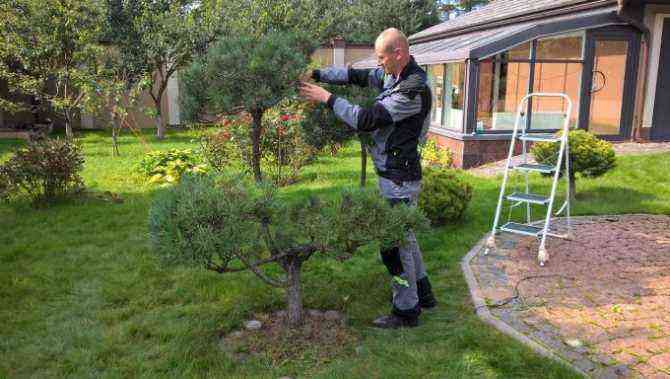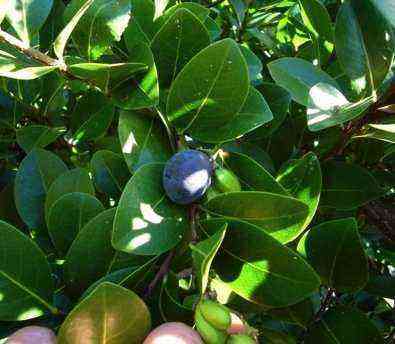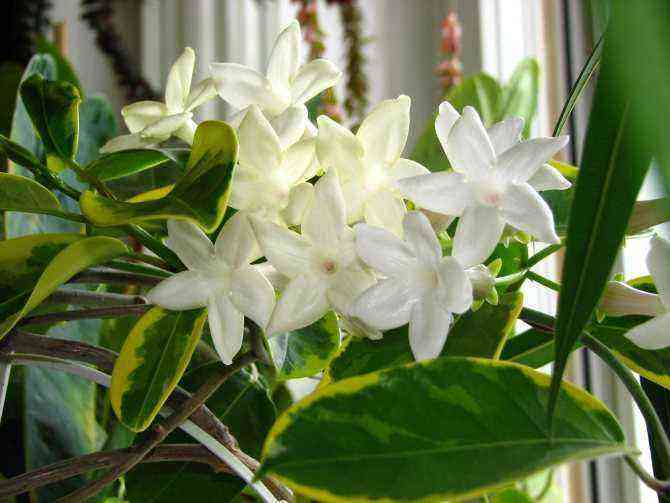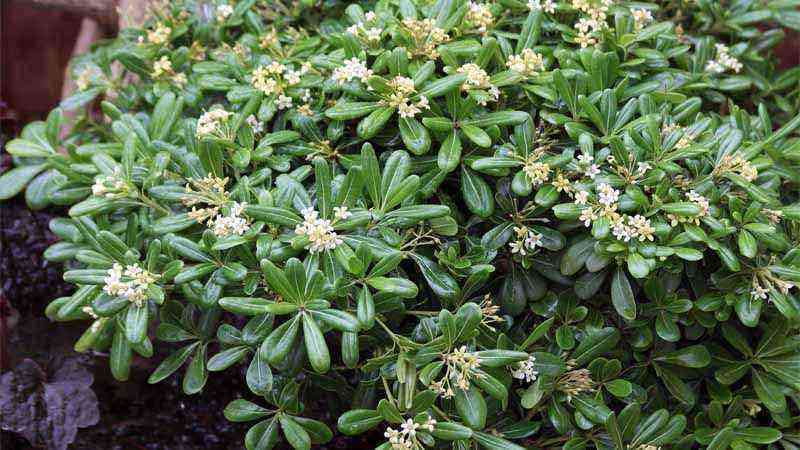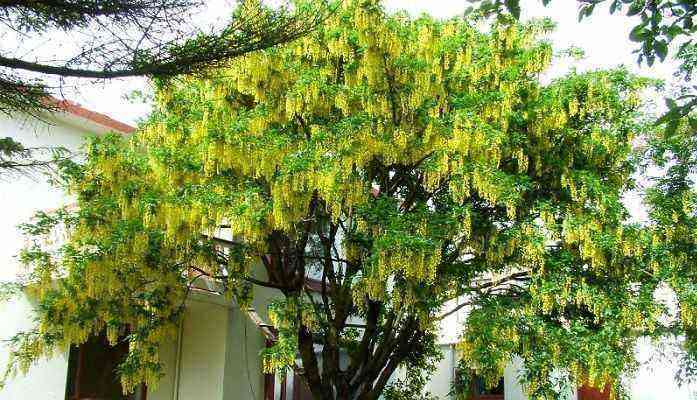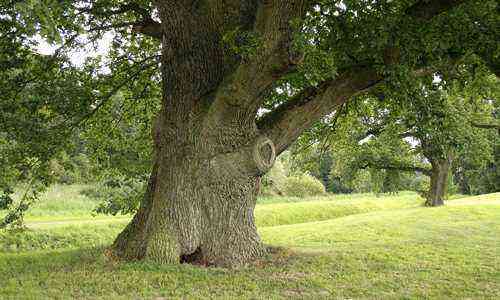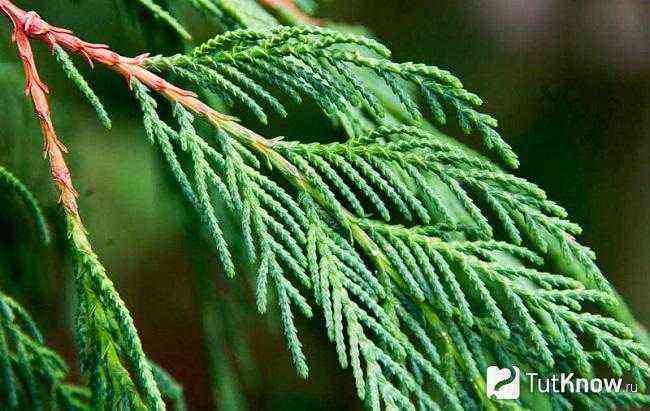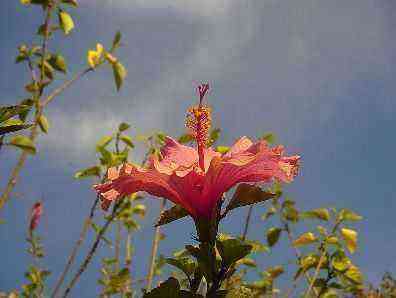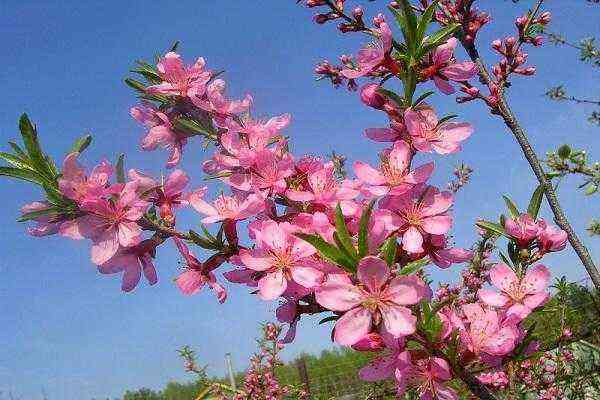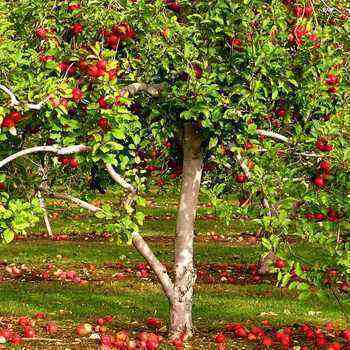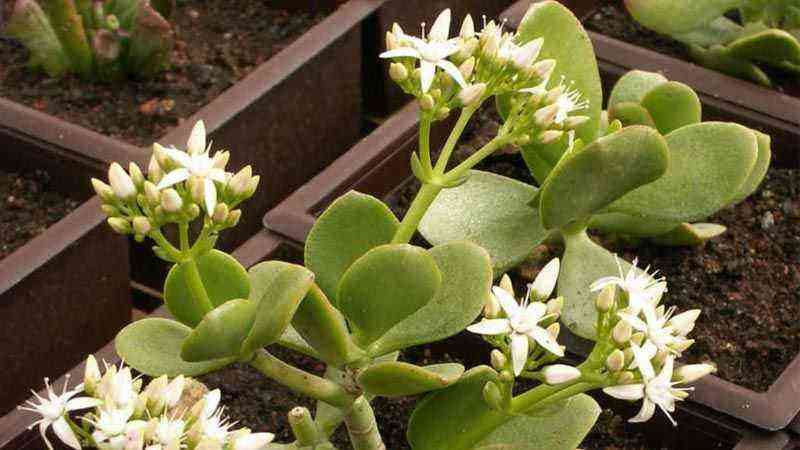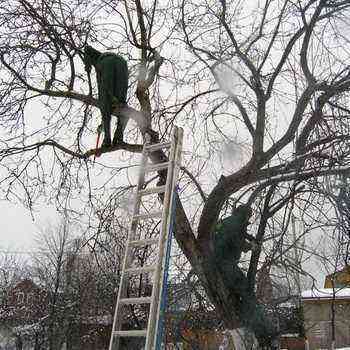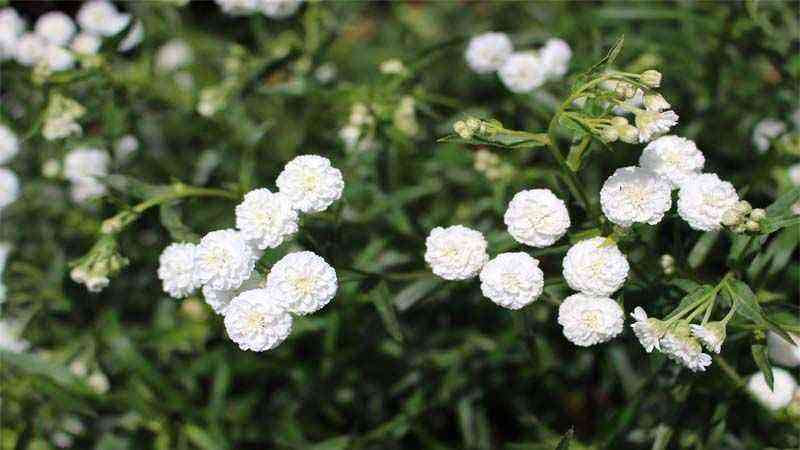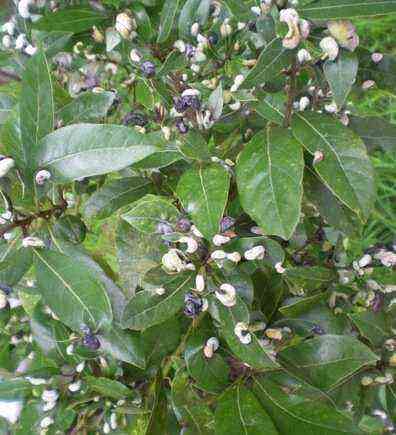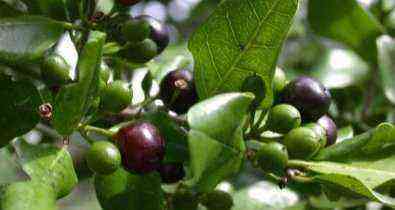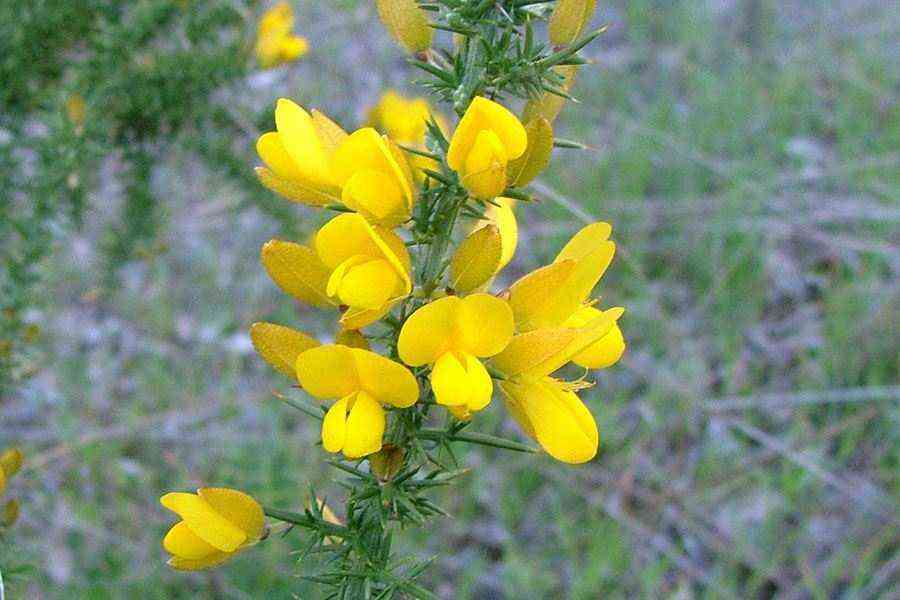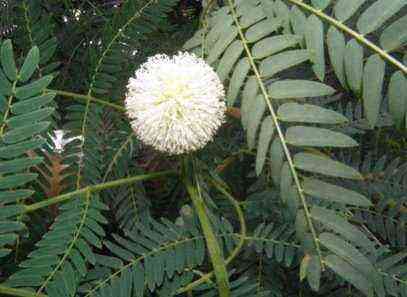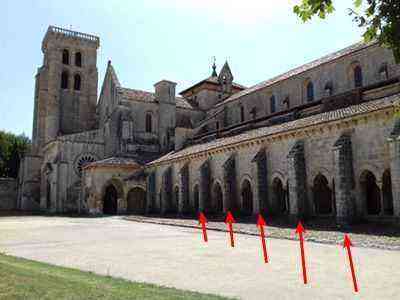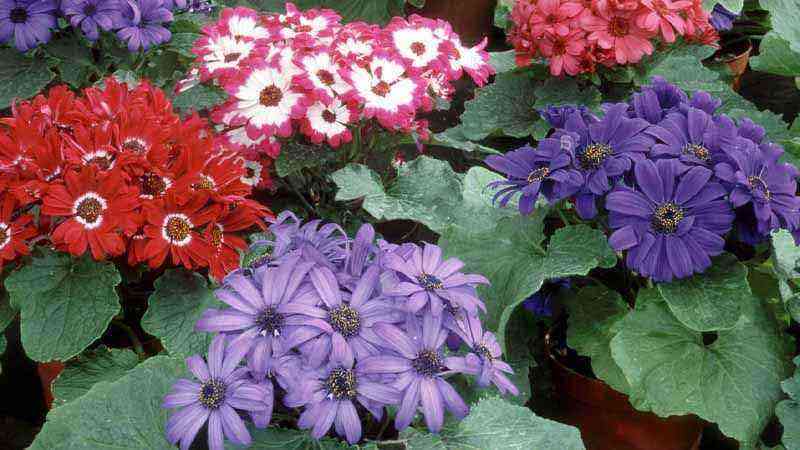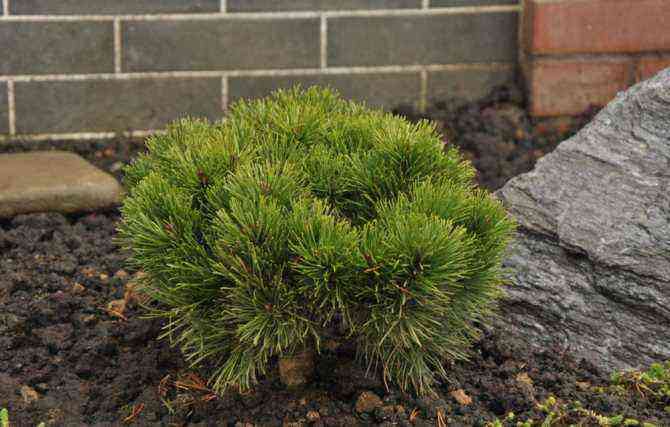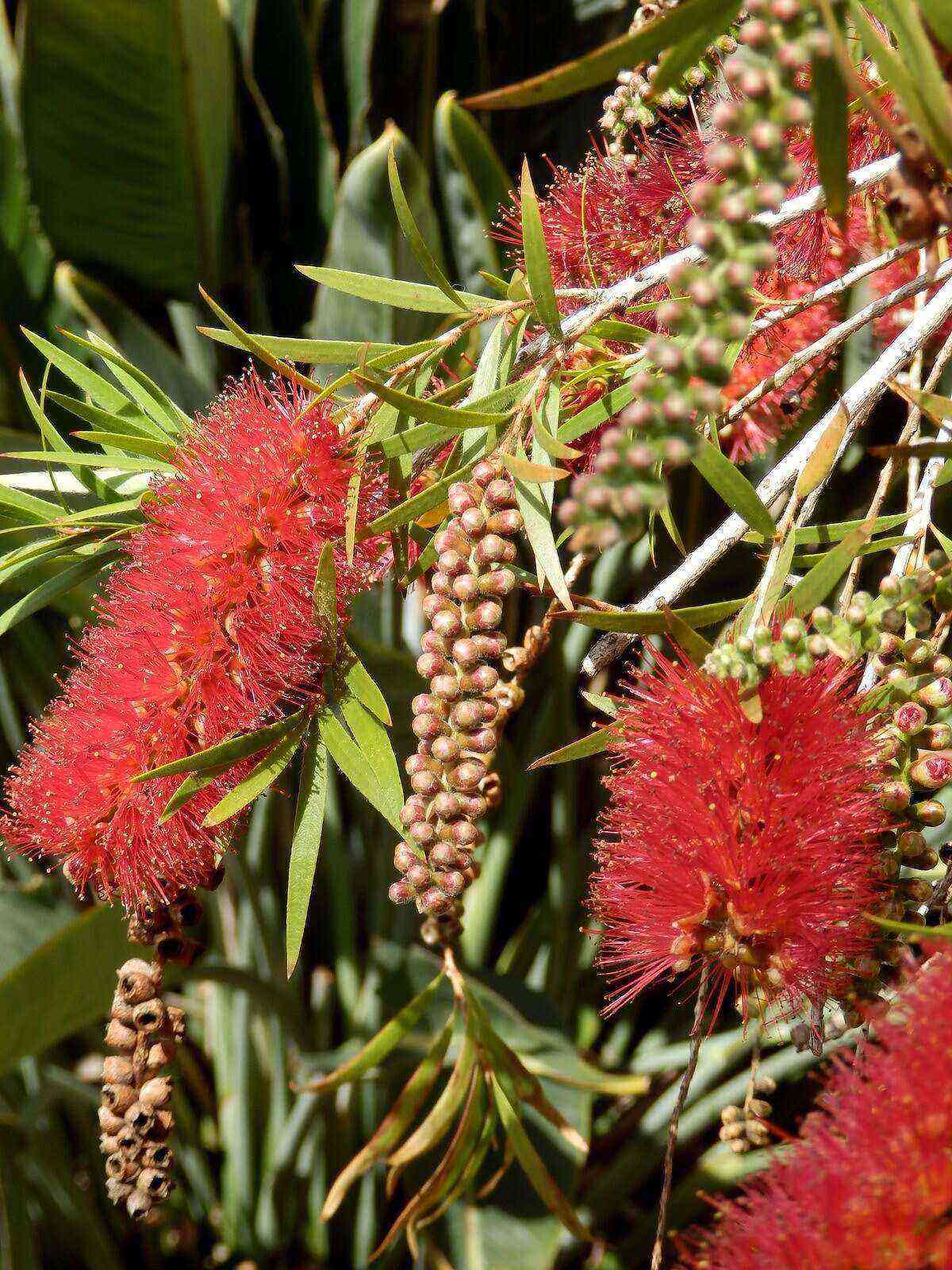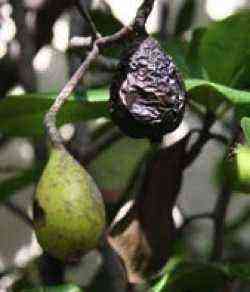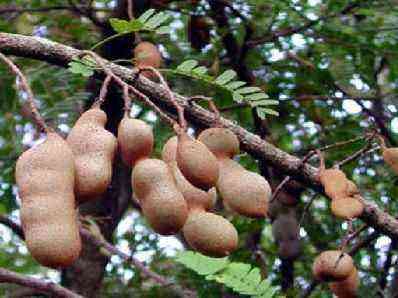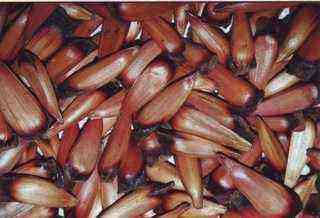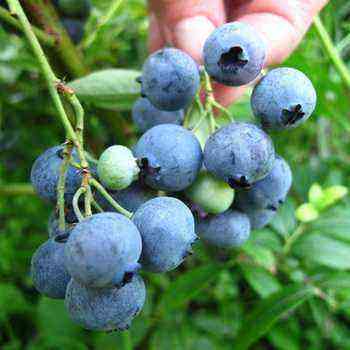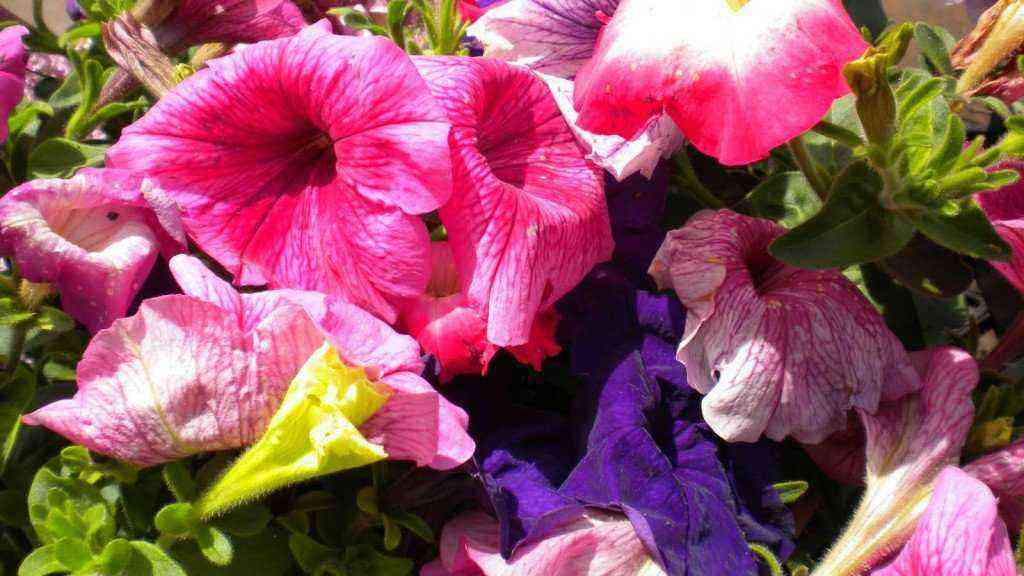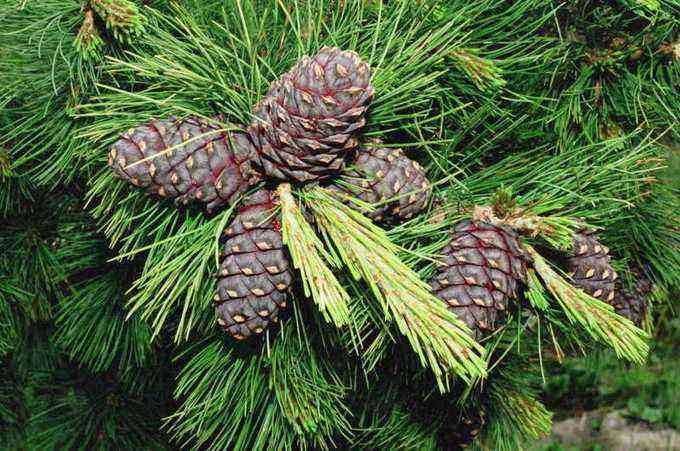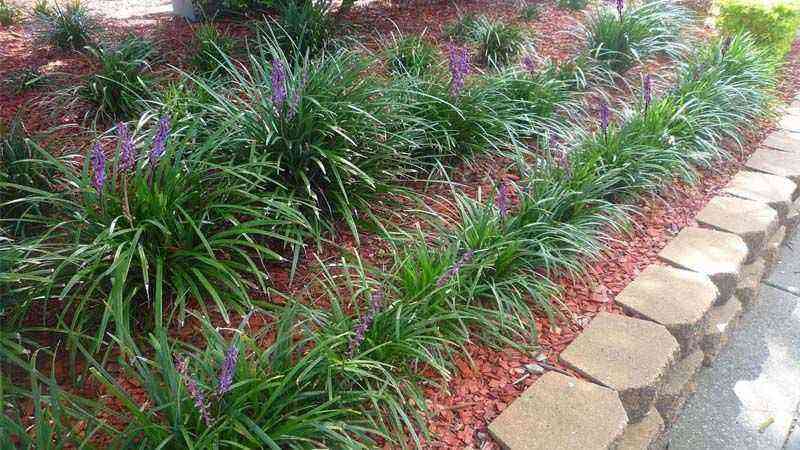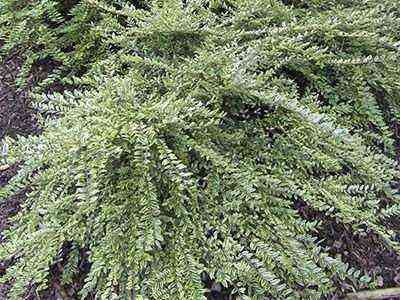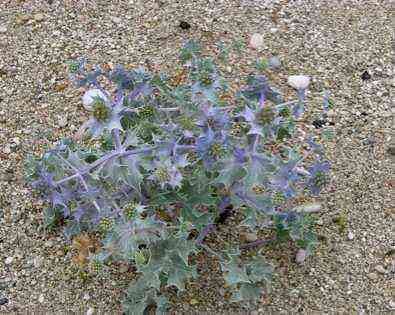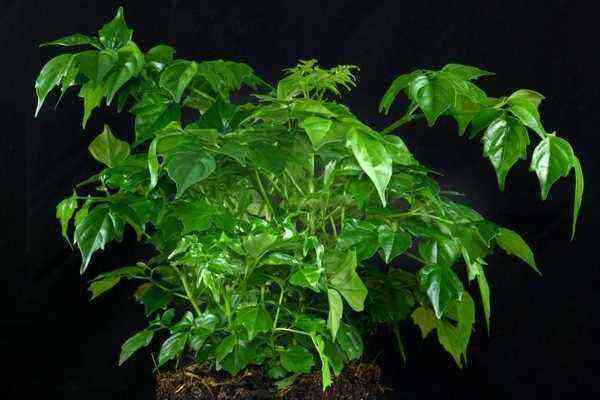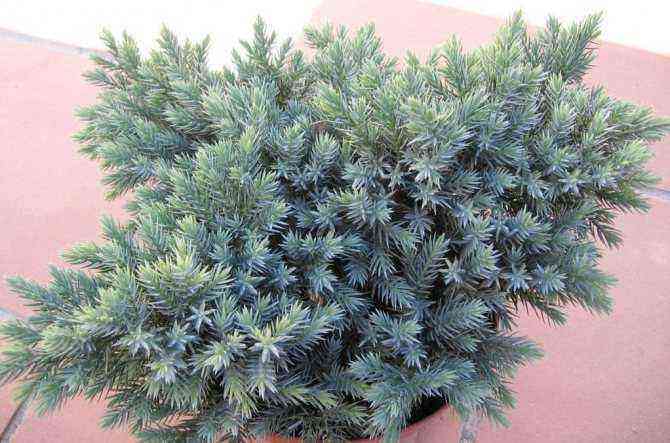The choice of trees is also great. The advantage of pine trees is that they are evergreen and grow quite quickly. In addition, pines, like other conifers, emit phytoncides that cleanse the air from bacteria and fungi, have a beneficial effect on the human body and spread a wonderful aroma.
In this article, we will provide general recommendations for replanting pine trees and demonstrate the practical part with our own example.
Morning in a pine forest
When to plant
There are two seasons for planting seedlings of any trees and shrubs – spring and autumn. There is a technology for transplanting large trees in winter, during a dormant period, but this requires special equipment that allows you to extract a tree along with a large amount of soil without damaging its roots.
You should not transplant during a period of active growth. During this time, the trees require the maximum amount of water, and drying out and damage to the roots causes the greatest damage to the tree. In pine, this period lasts from the beginning of the growth of young shoots to their lignification.
The most favorable time for replanting pine is mid-spring. Over the summer, the tree takes root in a new place and meets winter in full readiness. The beginning of autumn is also a good time. Trees are preparing for winter, slowing down the life processes, which allows them to endure such a gross interference in their lives. If you did not manage to plant trees either in spring or early autumn, you can plant later, but in this case, you should cover the tree with spruce branches, spunbond or other covering material to insulate it and protect it from the active spring sun. It will be possible to remove this protection in the spring, after all the snow has melted.
Tree care after transplant
If the pine is transplanted in the spring months, then there is no need to water it after the procedure. During this period, there is enough moisture. Do not overfill ephedra. When the transplant is done in the fall, the seedling is watered regularly. Watering stops two weeks before the predicted frost. In order for the crown to be spreading, the plant is fertilized with additional fertilizing. You can enrich the soil with humus. Two years after transplanting, the plant is additionally covered with spandex for the winter. After the ephedra grows up, it will easily endure frost.
Popular: The subtleties of storing tulip bulbs in autumn and winter
Pine should be watered two to three days after transplanting. During this time, the tree takes root and begins to grow. In the spring, the seedling is not watered. In summer, when the drought begins, it is watered at the root and the crown is shed from a watering can. If transplanting takes place in summer or autumn, then watering every seven days is enough. At this time, the pine will prepare for frost and adapt. Shortly before the onset of frost, the plants stop watering.
You do not need to fertilize the pine immediately. The plant has enough nutrients that are laid in the hole. As the needles grow, it can be fertilized with mineral compounds for conifers. Do not feed with manure, decoctions of herbs or bird droppings. Fallen needles are not removed. They also become a source of nutrients. Pruning is optional. But at the same time, sanitary cleaning is necessary, in which dry branches without needles are cut off.
After transplanting, young seedlings are sheltered for the winter. Burlap or spunbond is recommended. Do not use polyethylene film as a covering material. In spring, the covering material is also not removed. It protects young trees from sunburn. As the pine grows older, it becomes stronger and is not afraid of frosts.
Transplant errors
If all the rules are not followed during the procedure, then the ephedra does not adapt well and gets sick. Most often, due to inexperience, the gardener digs up a plant with a too small earthy clod or damages the root system. With prolonged exposure to the open air, the seedling begins to dry out and may even die.
Errors are also made when it is incorrectly located in the hole. It is important to choose a landing site. If the deadlines for transplanting are not met, then the pine adapts worse. The main factor is the correct composition of the soil.
Where to get a seedling
Planting material can be obtained in several ways: bought in a forest nursery, dug up in the “wild” or grown from seeds.
Growing from seeds is an interesting but long-term activity. You will have to wait at least two to three years.
If there is a forest nursery near you, purchasing a seedling there may be the best option – you will get a tree of the right age, with an intact root system. In addition, there you can get advice and, possibly, the necessary help.
At first glance, the easiest option is to dig a young pine tree in the forest. It is simple in that you do not need to buy anything. The difficulty is that you need to dig out and transport the seedling carefully so as not to damage the roots.
If you decide to dig on your own, it is best to choose a tree that will die if not replanted. There can be a lot of self-seeding around mature pines, especially after years of fruitful seeds. Almost all such seedlings die due to competition with each other and with other plants, lack of sunlight, grass burns, or will be trampled by people and animals. Sometimes seeds scattered by birds sprout on steep crumbling slopes, from which they fall, reaching critical growth and mass. For our site, we found just such pines – on a steep hillside. But it is very inconvenient to dig out such “candidates” – it is difficult to work with a shovel where it is difficult even to stand. Pines that have grown on slopes have one more feature: the trunk does not grow perpendicular to the surface of the earth, which is not very convenient when transplanting to a flat area.
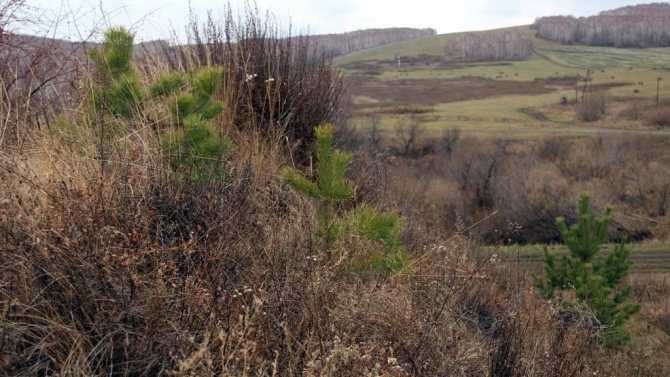
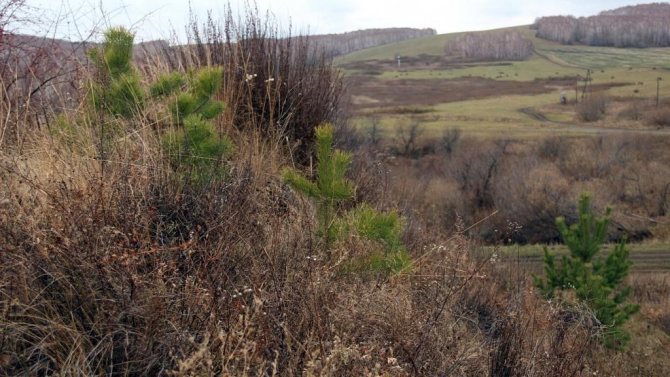
We are looking for pine trees for transplanting
Trees growing on the sides of roads, under power lines, on the walls of existing quarries, at the sites of unfolding construction sites, etc. are also doomed to destruction. To transplant such a tree is to save it.
Selecting a landing site
Pine trees love sunny areas, but it is advisable to shade young trees at first – in natural conditions, trees do not grow in a bare place, accompanying plants give them shade.
Pines grow best on light soils – sandy and sandy loam. If the soil is heavy (loamy and clayey), additional drainage should be provided. To do this, a 20-cm layer of sand or expanded clay is added to the planting pit (finely broken brick or gravel can be added).
In nature, pine grows in a variety of soil and hydrological conditions, actively adapting to them. The root system can have a deeply penetrating and well-developed taproot if the groundwater is deep, or it can be shallow. However, the bulk of the roots is in any case located in the upper soil layer, at a depth of 50-60 cm.
We decided to plant a pine tree in the far unused corner of the site. There, our site turns into a rather high hill – the groundwater is close to us, and the hill gives some reserve for root growth in depth; perhaps this is an extra reinsurance, but we would not want the pine to die from root decay in a couple of years. The wild apple trees growing around will play the role of nurse trees – to protect the seedling from the scorching sun. As the pine grows strong and mature, it will outgrow the surrounding trees and bushes and receive a lot of sunlight.

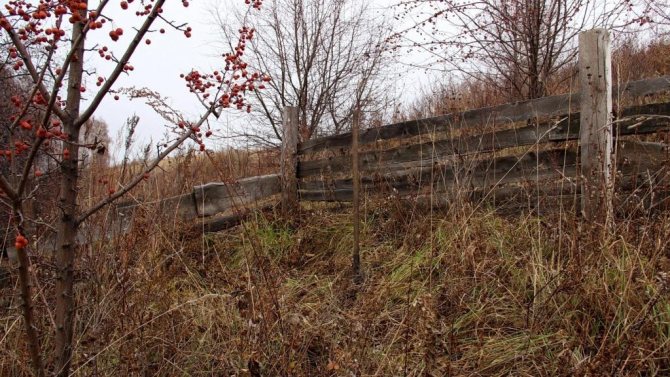
Choose a place for planting
What pine tree to plant in the country
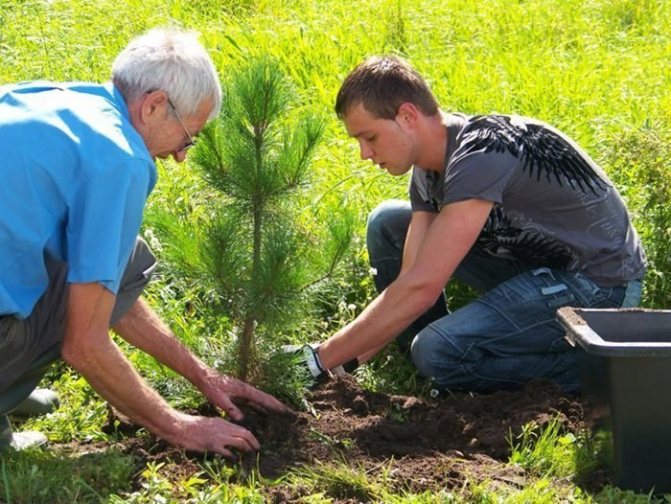

Pines, like other plants, have different varieties, including undersized ones. Here are the main ones that can be planted in the garden:
- Fastigiata is a cone-shaped pine that usually does not grow taller than 15 meters. In terms of the span of the branches, it is small, so it is suitable for growing in any area.
- Vatereri – reaches a height of only 4 meters and has an egg-shaped crown (or a kind of hat). It grows rather slow and loves sunlight.
- Mountain pine is a small branched bush. It is very unpretentious and has high immunity.
- Compact – has a maximum height of up to 10 meters. From the outside, this variety is more like a Christmas tree. Grows very slowly;
- Dwarf cedar – has widely spread branches, and reaches a height of only 4 meters.
Before buying, you need to study the main characteristics of each variety.
Planting pit preparation
If you are going to transplant a pine tree dug out in the forest or in other “wild conditions”, then first of all you should prepare a planting hole in order to immediately plant the brought seedling. The planting hole should approximately correspond to the size and shape of the clod of earth with which the tree will be transplanted. The larger this lump is, the less damage the root system will receive. Calculate your strength – what size lump you can dig up and deliver to the landing site. For seedlings up to 70 cm high, a pit size (and coma) of at least 60 × 60 cm is recommended, a height of more than 70 cm is at least 80 × 80 cm. The shape is a pyramid or cone (you are unlikely to be able to dig out a clod of a different shape).
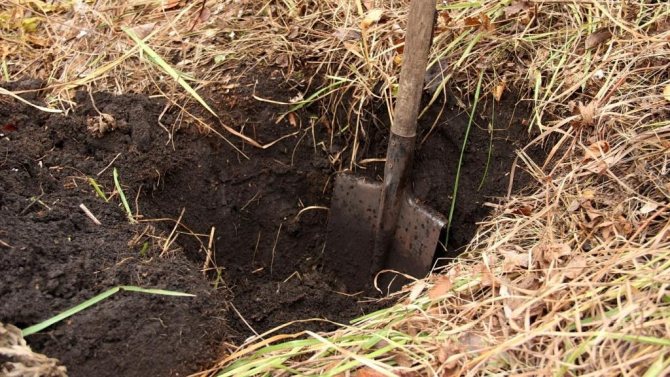
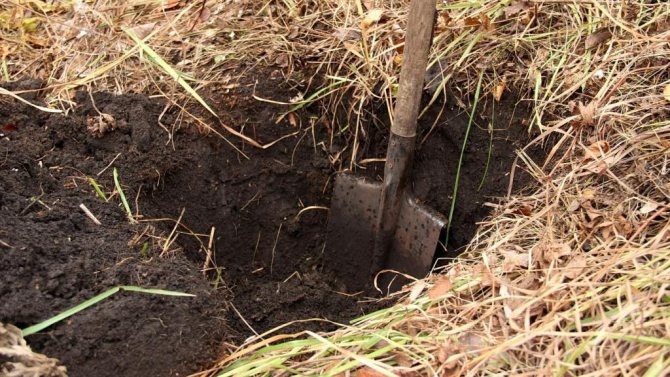
Digging a landing hole
As already mentioned, in heavy soils, additional drainage is necessary. Taking into account the drainage, we made the landing pit a little deeper and poured about 30 cm of sand mixed with the earth extracted from the pit on the bottom.
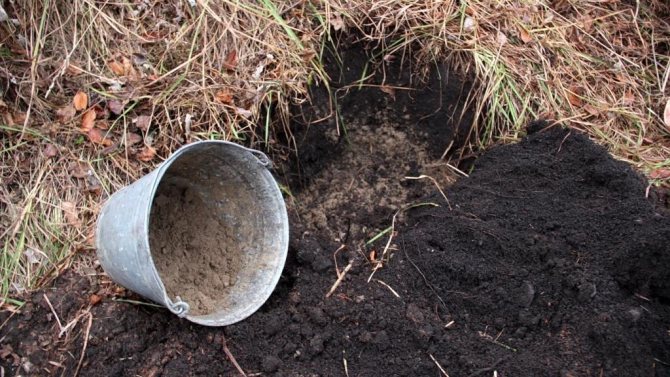
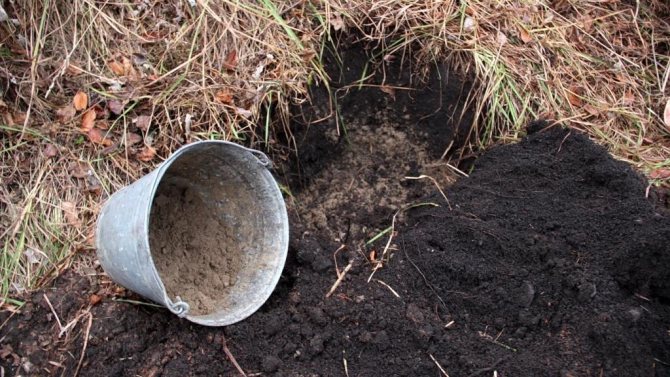
Fill up the drainage layer
We diluted clean sand (taken from a pine forest) with fertile soil, which will serve as fertilizer for our pine. For the same reason, we did not add mineral or organic fertilizers to the pit separately; our land is good black soil, and the place for planting the pine was virgin soil, so there will be enough minerals for the pine anyway.
If you want to fertilize, use mature compost or buy a special fertilizer for conifers.
The benefits of pine nuts
Siberian pine fruits have a huge range of medicinal properties and are of great nutritional value. They are rich in balanced proteins, fats, carbohydrates, vitamins and trace elements. Pine nuts are eaten and widely used in cooking in different countries. They are the raw material for valuable nutritive oil.
For a long time, pine nuts have been used in folk medicine for the treatment of stomach, gastritis and pancreatitis. The ground cake is contained in food vitamin supplements. Even walnut shells have valuable qualities: anti-inflammatory and analgesic tinctures are prepared from them. They help get rid of rheumatism, arthritis and osteochondrosis. Eczema, lichen and other skin diseases are successfully treated with wrapping and lotions from the decoction of the same shell. The seeds of Siberian pine cones cope with vitamin deficiency, weight loss, help restore strength and increase immunity.
Selection and preparation of a seedling
When choosing a young tree to transplant, check for fragility. If the needles turn yellow, and the tips of the branches break easily, the tree may be damaged and begin to die. A dead tree retains its “marketable” appearance for a long time; remember the Christmas trees, the needles from which do not crumble, even though the tree has absolutely no roots.
When going to dig up a seedling, bring water and a piece of cloth large enough to wrap up the dug out lump of earth with roots. When exposed, the main pine root dies in the air after 15-20 minutes. This is another reason to dig out pines with a fairly large root ball.
After choosing a seedling, use a shovel to cut the turf around the perimeter, penetrating the shovel as deep as possible into the soil. Then use the shovel as a lever to lift and lift the root ball.

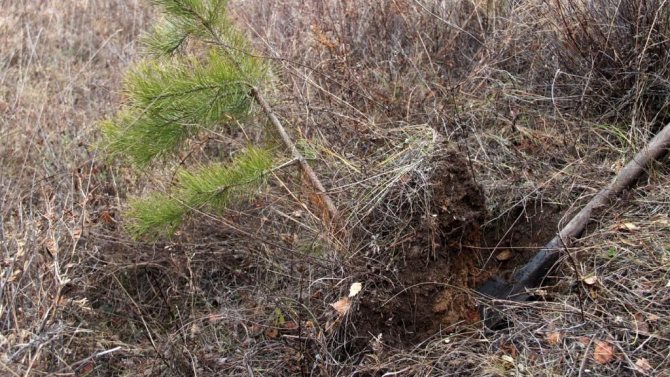
Digging a pine tree
Slip a wet cloth under the shovel, straighten it and lower a lump on it. Wrap the fabric tightly around the ball and, holding it, pull the pine tree out.
Firstly, this way you can take out a clod of earth without damaging it. Secondly, the tightly wrapped and knotted fabric will prevent someone from falling apart during transportation. Finally, this will prevent the root from drying out. If you use a thin cotton sheet, then the seedling can be lowered into the planting hole right in it – the fabric will quickly rot and will not interfere with root growth.

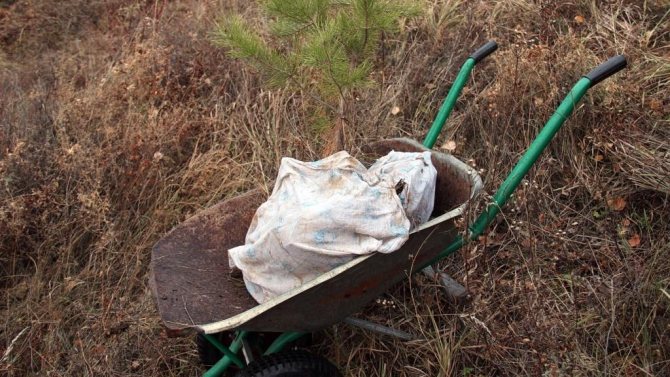
The dug tree is ready for transport
Reproduction
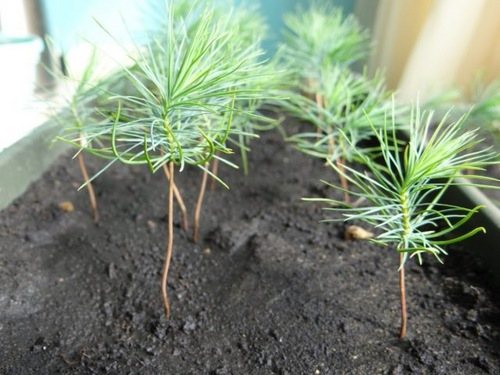
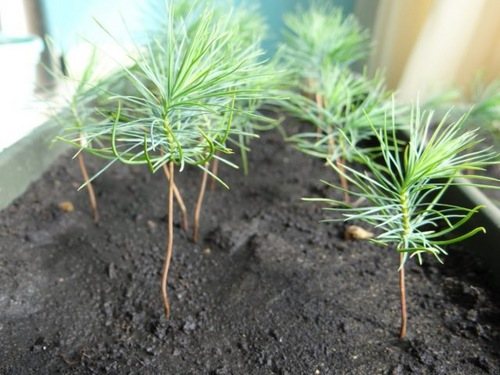
There are several ways to propagate coniferous crops.
- Seeds. For sowing, you need to take fresh, fully ripe seeds. Collect cones at the end of autumn, dry, get seeds. Sort out and soak the seeds 60-80 days before sowing, dispose of the floating ones. Then mix them with wet sand and remove in the cold for 20 days. Sow in clean sand or a nutritious light substrate. The end of the seed goes down. Press each one a little, sprinkle with dry needles, moisten well, cover with transparent polyethylene, put on a warm, light windowsill. Seedlings appear in early May. They need to be ventilated and moistened daily. When a second pair of real needles appear, transplant them into separate containers filled with soil for conifers. You can plant small pines on your personal plot in the spring, after two or three years (depending on development).
- Graft. For this, it is necessary that a pine tree older than five years (stock) already grows on the site. For the scion cuttings, you can take a growth of one year old. Remove the needles from the scion, leaving them only at the top near the bud, at the rootstock shoot – lateral buds. Cut the rootstock shoot a little, insert the scion, rewind the junction well. If everything is done correctly, then parts of the cuttings will begin to grow together, and the bud of the scion will bloom. Next year, a new shoot will appear, which must be cut off above the graft and rooted.
- Cuttings. In autumn, cut off a lignified stalk with a length of 70-110 cm, place for 3-7 hours in a manganese solution, plant in a container filled with a mixture of garden soil with sand, water. Cover the stalk with a greenhouse film and put it in the cellar for the winter. With the onset of warmth, put the pot outside. You can plant a pine tree on the site in another year, in the spring.
Advice!
Cutting is a laborious method of propagation, which does not guarantee the result, since cuttings of pines give roots rather poorly. If you need to propagate trees at home, it is better to use seed planting.
Landing
Having delivered the tree to the planting site, we pour half a bucket of water into the planting hole and simply lower the seedling there. If the size of the clod of earth differs from the landing pit, add or remove the required amount of soil.
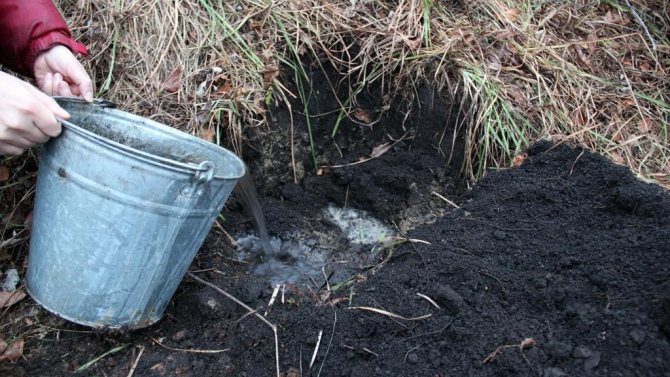
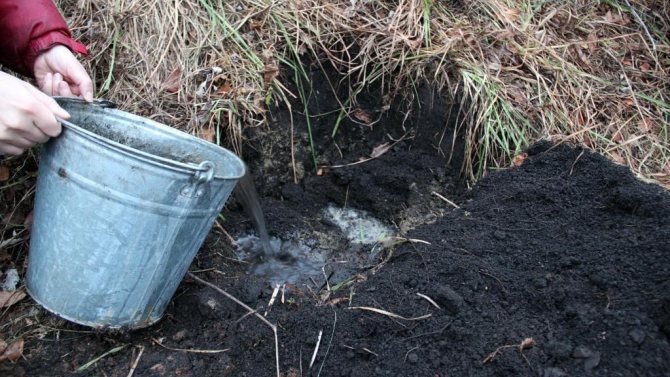
Watering the planting hole
Note: the root collar must not be deepened (i.e. the place where the tree trunk begins to branch out into the roots), it must be at ground level. Otherwise, it rots and the tree dies. If you transplant a tree with a dense, undisturbed lump of earth, the problem with determining the depth at which the root collar should be located automatically disappears.
After planting, we will mulch the ground around the trunk. Mulch, as you probably know, helps to retain moisture, prevents weeds from germinating, and works as a gentle fertilizer by slowly decaying. We collected fallen pine needles for mulching.

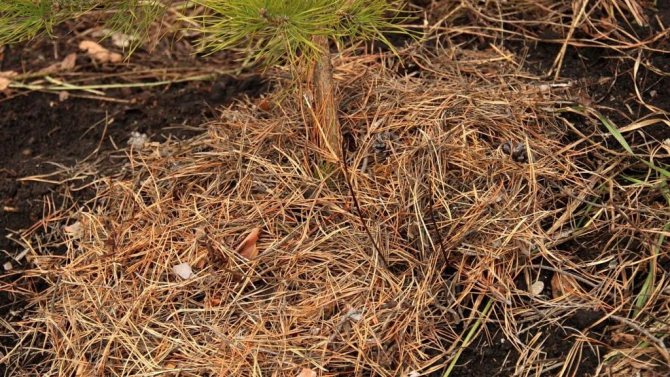
Mulch the ground around
Finally, water the seedling even if the ground is damp. Watering not only provides a supply of water, but also improves the contact of roots with the soil, which means that it creates more favorable conditions for nutrition and restoration of damage. It is advisable to water with a watering can with a nozzle so as not to erode the soil.

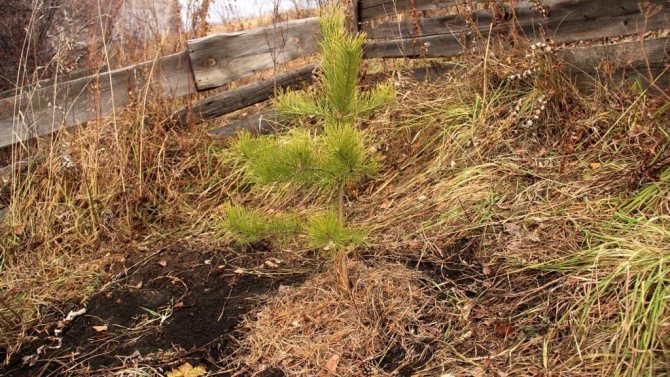
Transplanted pine
If you want to plant several pine trees, place the next one about four meters from the first. If you plant trees too close, they will interfere with each other as they grow up.
